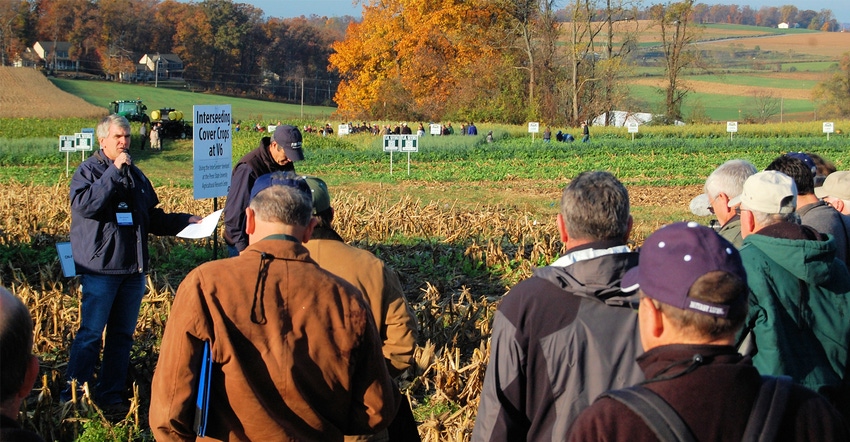June 21, 2018

Ever have a great cover crop research idea, but no money to cover associated costs to get good data? Or, were you willing to host a cover crop field day, but no funds to cover coffee and donuts and a tent?
Good news! There’s plenty of grant money to do so. But it can be difficult find, let alone figure out how to navigate a funder’s protocol to qualify your project. Over the years, I’ve been awarded seven grants and have discovered a few keys to increase chance of success. Each has defined benchmarks of achievement plus a protocol to get there.
Finding the funding
USDA’s Sustainable Agriculture Research and Education program is one of the most popular grant sources for cover crop-related activities. Review the hundreds of projects they’ve funded over two decades to familiarize yourself with the scope of supported endeavors. Or, talk to Natural Resource Conservation Service and University Extension folks. They regularly interact with those who are financially assisting worthwhile ideas.
Match your goals
Synchronizing your idea with a funder’s goal is the most influential grant-securing key. After reading necessary application requirements for any grant, I highly recommend a personal phone call to the person having the most influence. This can clarify your goal and begin an invaluable relationship when that evaluation team deliberates on who gets the money.
Make sure your application includes a high enough financial request to meet your need, but not what might seem excessive. Be able to justify all expenditures. And once awarded, stick to the budget.
Grant writing
It’s a rare individual who enjoys grant writing. But it’s critical for landing funding. Most grants are competitive, so a well-written proposal goes a long way. Talk to others who have experience and ask them to review your proposal.
Sometimes, you can even submit your request before the deadline. Then you can ask the funders if it covers requirements they need.
Collaborate and partner
Most funders require collaboration with others. This might be Extension, NRCS or another conservation group. This provides legitimacy to all involved. I’ve found they can be a source of experience and helpful in many projects.
In-kind contribution
One of the more confusing components of grant proposals is the “in-kind” requirement. To discourage potential grantees from getting “free money” to do pet projects, the funder requires you to provide a level of contribution as well — up 50% of your total request, though it can vary greatly.
In-kind may not be dollar bills, either. One example for a research project would be to provide the rental value of the land where the research is done.
Dissemination of results
All grant funders want results. It’s critical your proposal has a compelling plan detailing how your outcomes are leveraged to benefit others. This can include press releases or follow-up seminars describing what you learned.
The Coach’s Closer
Having money to accomplish your cover crop project helps you discover answers or showcase achievements on your farm. It can benefit many others, too. That’s really the ultimate goal grant funders desire.
Groff is a cover crop pioneer and innovator who farms on the Chesapeake Bay watershed. Check out his website, covercropcoaching.com.
About the Author(s)
You May Also Like




